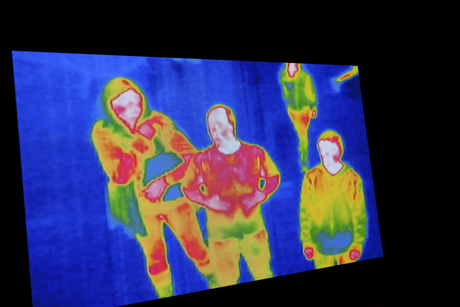Ten tips for imaging

Using advanced technology, leak detection and repair programs will not only improve operator safety, but also protect the environment from potentially harmful gases.
Optical gas imaging (OGI) cameras use spectral wavelength filtering and sterling cooler cold filtering technology to visualise the infrared absorption of VOC/hydrocarbon, SF6, refrigerants, carbon monoxide and other gases whose spectral absorption matches the response of the camera.
The development of OGI technology means that the industry can carry out a ‘Smart LDAR’ (leak detection and repair) program, allowing operators to safely and efficiently visualise gas leaks. Using OGI means the industry can reduce industrial emissions and allows operators to conform to future regulations. In addition, the technology saves money as it delivers a more efficient process. Most importantly, it improves the safety of both assets and personnel.
To get the most out of your OGI equipment, you should consider the following 10 tips.
1. Understand the application and needs
Different applications require different cameras. One camera will not detect all gases, so you’ll need to be clear on which type of gas you are dealing with. For example, a VOC/hydrocarbon OGI camera will not see SF6 and a CO camera will not see refrigerants.
2. Take into account the environmental conditions
The success of passive optical gas imaging depends on environmental conditions. The greater the background energy differential, the easier the camera will be able to visualise the gas leak and pinpoint its source.
Active optical gas imaging (ie, using a laser-based backscattering technique) relies on a reflective surface in the background. This presents a significant challenge when looking at components high up and pointing the camera at the sky. Additionally, weather conditions such as rain and strong winds need to be taken into account. Rain can make detection very difficult, but wind can actually help visualise the gas because it makes the gas move.
3. Keep in mind that optical gas imaging is qualitative, not quantitative
Due to the environmental variants, background energy differential and variations, an OGI camera will not be able to tell which amount of gas is leaking or what gas it is. An OGI camera will, however, pinpoint the source of the leak in the most efficient and effective way.
4. Combine an optical gas imaging camera with a sniffer probe
Use an OGI camera to visualise the leak and trace its source as the first step. To quantify the leak, you’ll need a sniffer probe — a toxic vapour analyser (TVA) or an organic vapour analyser (OVA). Using this combined approach is referred to as Smart LDAR.
5. Use all the available features and functions
Certain OGI cameras — including all of FLIR’s GF-Series cameras — are dual-use systems. They can also be used for industrial maintenance inspections, including high- and low-voltage electrical installations, mechanical installations, pipework and insulation, ovens and more. The thermographic function on an OGI camera will also help determine the background temperature/energy the gas is absorbing.
Unlike other thermographic applications, the object of detection (gas) has no visual representation and it is moving constantly. Therefore, a continuous focus is most important, and so is the thermographic capability to determine the temperature range settings. An OGI camera also allows users to record a movie to capture the movement and pinpoint the leak. It is always advised to take a visual image.
6. Keep it safe
A gas imaging camera is a quick, non-contact measuring instrument that can also be used in hard-to-access locations. It can detect small leaks from several metres away and big leaks from hundreds of metres away. It can even show leaks on moving transport vehicles, hereby greatly improving the safety of both the inspector and the plant.
Thanks to great performance, sensitivity and (in some cameras) a high-sensitivity mode (HSM), users can scan for leaks from a safe zone or from a greater distance when compared with traditional gas detection methods.
7. Consider future industrial emissions regulations
Fugitive gas emissions contribute to global warming and pose deadly risks to both workers and people living close to these facilities. FLIR optical gas imaging cameras detect dozens of volatile organic compounds, including the greenhouse gas sulfur hexafluoride (SF6), thereby efficiently contributing to a better environment.
Optical gas imaging cameras also allow users to comply with new industrial emissions regulations and procedures, such as those set by the new EU Industrial Emissions Directive (IED) in Europe and some EPA regulations in the United Sates.
8. Keep track of your return on investment
In many cases, the cost of the camera is paid for within its very first survey and in some cases with the finding of the very first leak.
9. Work with permits
OGI cameras in general are not Zone 1 ATEX certified. Therefore, you will need to apply for a hot work permit or use it under a permit to work scheme. Remember, you can see significant and dangerous leaks with the right camera from a safe zone, even outside of the facility perimeter.
10. Utilise training
Learn from experienced and qualified OGI users to get the most out of your camera and consider additional training from organisations such as Infrared Training.
Using data to beat the energy crisis
National Ceramic Industries Australia has enlisted the help of OFS to tackle the energy crisis...
Multimeter safety in Australia
Recent serious incidents involving multimeters have highlighted the risks of using them when...
Top 10 tips for keeping safe this winter
As Australians pull heaters and electric blankets out of storage and spend more time indoors,...




